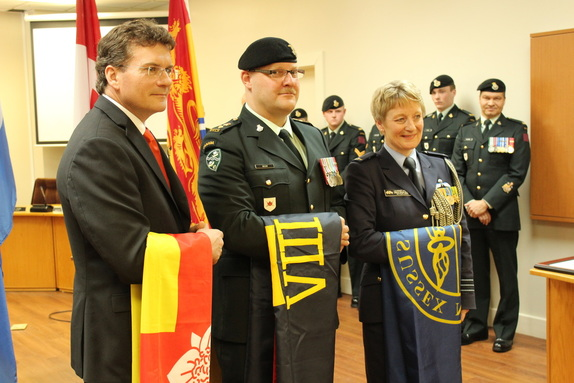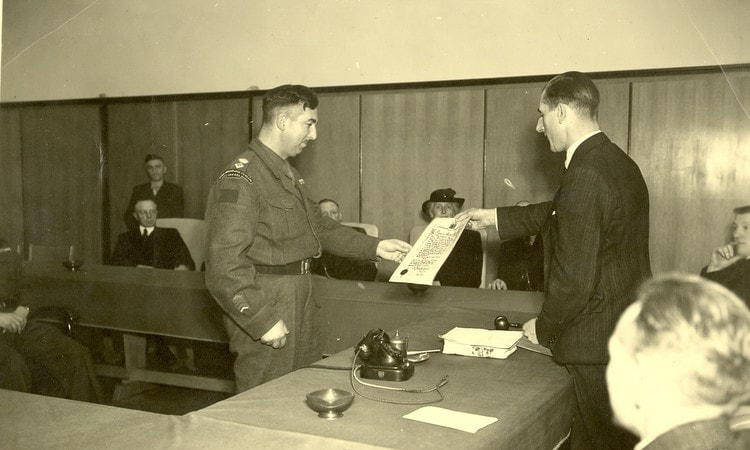As part of this, the regiment would transition from a wartime service to peacetime service. This entailed a comprehensive alteration to the regiment’s training schedule. An increased emphasis was placed on proper parade techniques for a series of regimental inspections. Additionally, vehicles had to be maintained at a new peacetime standard, which meant the men had to keep their tanks clean and in good working order. However, the men and officers still had opportunities to engage in extra-curricular activities. These included sailing, canoeing, swimming, dances, as well as nights on the town. The regiment ensured that all entertainment was coordinated to maximize the number of activities the men could partake in.
For those men still in the Netherlands, they were soon to be put to work assisting with the post-war efforts. The regiment was tasked with guarding the transportation of German prisoners through their jurisdiction back to Germany. By June, the number of German prisoners being guarded by the Hussars had reached the tens of thousands, with more on the way. Outside of guarding prisoners, the regiment contributed to the Dutch reconstruction efforts. The regiment would be based in the Town of Eelde for the remainder of their stay in Europe. From May to November 1945, they provided valuable assistance to the Dutch people in Eelde, assisting them with rebuilding infrastructure in the Town.
However, with the regiment securely ensconced within Eelde, demobilization efforts quickened. All tank rounds were turned in to a temporary ammunition dump, where it would be disposed of. This was simply the first step. Soon all munitions had to be turned in. Everything from their 50 calibres, to their 9mm rounds for their sidearms, everything was turned in. This was followed by turning in protective gear. Eventually, word had come down that the men would soon be turning in their Sherman tanks too. Starting in July, the regiment began saying their goodbyes to the Sherman’s. By the end of the month, the regiment no longer had its arsenal of armour.
With their tanks gone, the men realized that they were no longer needed in Europe, which only intensified their urge to return home. Recognizing that their stay in the Netherlands was going to be longer than anticipated, the regiment drafted a series of programs to occupy the men. Outside of the leisure activities of sailing and dances, soldiers were provided with the opportunity to take a series of educational courses designed to enhance their return to civilian life. Besides this, the men were given the opportunity to try their athletic skills against one another. Team sports were organized at the regimental and division levels. This occupied the time of many a soldier, who were all invested in proving their prowess vis-à-vis their comrades.
To find out more about the relationship between the Hussars and the Netherlands, or about the 8th Hussars in general, stop by the 8th Hussars Museum located in the historic Sussex Train Station along Broad Street.


